Related Research Articles
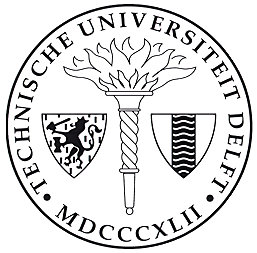
Delft University of Technology, also known as TU Delft, is the oldest and largest Dutch public technical university. Located in Delft, Netherlands, it is consistently ranked as one of the best universities in the Netherlands, and as of 2020 it is ranked by QS World University Rankings among the top 15 engineering and technology universities in the world.
The foreign employees in Meiji Japan, known in Japanese as O-yatoi Gaikokujin, were hired by the Japanese government and municipalities for their specialized knowledge and skill to assist in the modernization of the Meiji period. The term came from Yatoi, was politely applied for hired foreigner as O-yatoi gaikokujin.
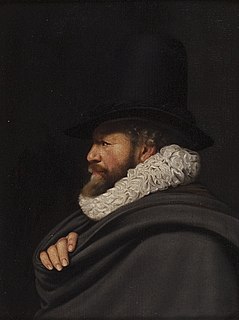
Hendrick de Keyser was a Dutch sculptor, merchant in Belgium bluestone, and architect who was instrumental in establishing a late Renaissance form of Mannerism changing into Baroque. Most of his works appeared in Amsterdam, some elsewhere in the Dutch Republic. He was the father of Pieter and Thomas de Keyser and Willem, and the uncle of Huybert de Keyser, who became his apprentices and all involved in building, decoration and architecture.
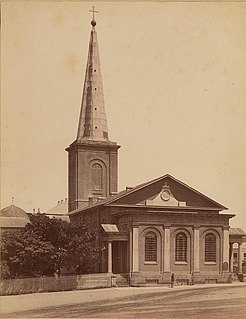
The New South Wales Government Architect, an appointed officer of the Government of New South Wales, serves as the General Manager of the Government Architect's Office (GAO), a multi-disciplinary consultancy operating on commercial principles providing architecture, design, and engineering services, that is an agency of the government within NSW Public Works.
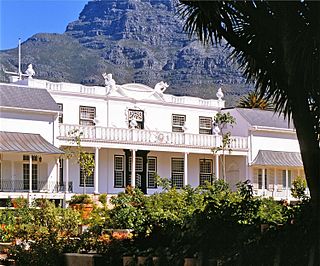
De Tuynhuys is the Cape Town office of the Presidency of the Republic of South Africa.

Cornelis Floris or Cornelis (II) Floris De Vriendt was a Flemish sculptor, architect, draughtsman, medallist and designer of prints and luxury. He operated a large workshop in Antwerp from which he worked on many large construction projects in Flanders, Germany and Denmark. He was one of the designers of the Antwerp City Hall. He developed a new style, which was informed by Flemish traditions, the 16th century Italian renaissance and possibly the School of Fontainebleau. His innovations spread throughout Northern Europe where they had a major influence on the development of sculpture and architecture in the 16th and early 17th centuries.

Daniël Stalpaert or Daniel Stalpert, was a Dutch architect, painter, town carpenter, print artist and draftsman. He was the first city architect in Amsterdam, a position that would not be filled again until 70 years after his death. He is mainly remembered for his contributions to the new town hall of Amsterdam, now the Royal Palace.
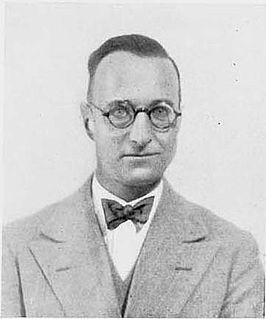
Leendert Cornelis van der Vlugt was a Dutch architect in Rotterdam. In the architects office Brinkman & Van der Vlugt he was responsible for the architecture of the Van Nelle Factory, a listed monument of the UNESCO World Heritage Site since 2014.

Louis Michel Thibault, was a French-born South African architect and engineer who designed numerous buildings in the Cape Colony. He was South Africa's first trained architect and brought with him a distinctive mannered neo-classicism.
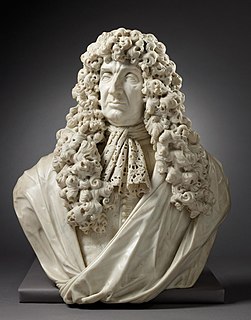
Rombout Verhulst was a Flemish sculptor and draughtsman who spent most of his career in the Dutch Republic. An independent assistant of the Flemish sculptor Artus Quellinus the Elder in the sculptural decoration project for the new town hall in Amsterdam, he contributed to the spread of the Baroque style in Dutch sculpture. He became the leading sculptor of marble monuments, including funerary monuments, garden figures and portraits, in the Dutch Republic.

The Ministry of Housing, Spatial Planning and the Environment was a Dutch ministry. It was responsible for policies on public housing, spatial planning, the environment and the housing of national government agencies. It was merged with the Ministry of Transport, Public Works and Water Management into the new Ministry of Infrastructure and the Environment on 14 October 2010.

The Faculty of Architecture and the Built Environment at TU Delft is the largest faculty of TU Delft with around 2,900 students. It is also one of the top faculties in the world: it was ranked 2nd in the world's top universities for architecture & built environment in the QS World University Rankings by Subject 2020, following the Massachusetts Institute of Technology (MIT), and 3rd in 2015, 2017 and 2018 an 2019.

Abraham van den Blocke was an architect and sculptor.
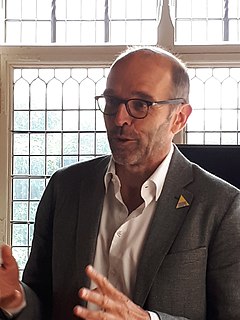
Maarten Allard Hajer is a Dutch political scientist and regional planner. Since 1 October 2015, Hajer has been Faculty Professor of Urban Futures at Utrecht University, where he leads the Urban Futures Studio.

Willem Jacob Herreyns was a Flemish painter of history subjects and portraits. He is regarded as one of the last painters in the tradition of the Flemish Baroque and the last follower of Peter Paul Rubens.
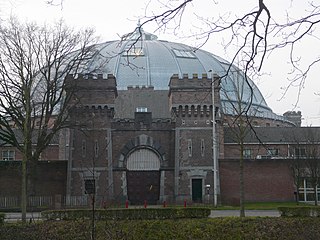
The Koepelgevangenis is a former prison in Breda, Netherlands, constructed in 1886, best known as the prison where convicted World War II collaborators were held captive.

Willem van den Blocke was a sculptor and architect of Flemish descent who was active in the Baltics and worked in a mannerist style.
The role of Flemish Government Architect was established in 1998 under Minister-President of Flanders Van den Brande to develop Architectural Design Policy in Flanders, Belgium.
References
- ↑ (in Dutch) Corjan van der Peet & Guido Steenmeijer (ed): De Rijksbouwmeesters. Twee eeuwen architectuur van de Rijksgebouwendienst en zijn voorlopers. Rotterdam: Uitgeverij 010, 1995